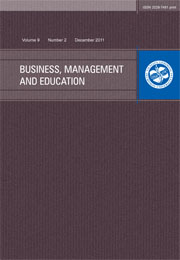Four Approaches to the Creative Economy: General Overview
Four Approaches to the Creative Economy: General Overview
Author(s): Rasa LevickaitėSubject(s): Economy
Published by: Vilnius Gediminas Technical University
Keywords: creative economy; creative industries; creative class; creative city
Summary/Abstract: The article presents the concept of the creative economy as a new economic phenomenon in the globalized environment. Four approaches on the new occurrence are presented. According to John Howkins theory, the fifteen creative industries (listed by the author) are the core of the creative economy. Both creativity and economy aren’t new, but brand new are its interaction and scope. A wide definition of creativity has formed Richard Florida’s theory of the developing creative class, which is a group of professionals, researchers and artists whose presence creates socioeconomic and cultural dynamism in cities especially. Richard Caves characterizes creative industries on the basis of seven economic properties and presents an idea that creative industries as such aren’t unique but the sectors of creative industries driven by creativity generate new approaches to business processes, the demand-supply chain and covers both economic and social indicators of the country development. Charles Landry has proposed a creative city concept, which states that cities are dependent on one resource only – its people. Creativity changes place, natural resources, market access, and becomes the key to dynamism of city development. A creative city defines a metropolis with variety of cultural activities glued to urban economical and social functioning. Key activities highly influencing rapid growth of the creative industries worldwide are related to both technology and economy. Digital revolutions and economic environments where revolutions took place, changes in technology and communications altogether have formed new conditions for development of creative economy as a new economic phenomenon.
Journal: Business, Management and Education
- Issue Year: 9/2011
- Issue No: 1
- Page Range: 81-92
- Page Count: 12
- Language: English

